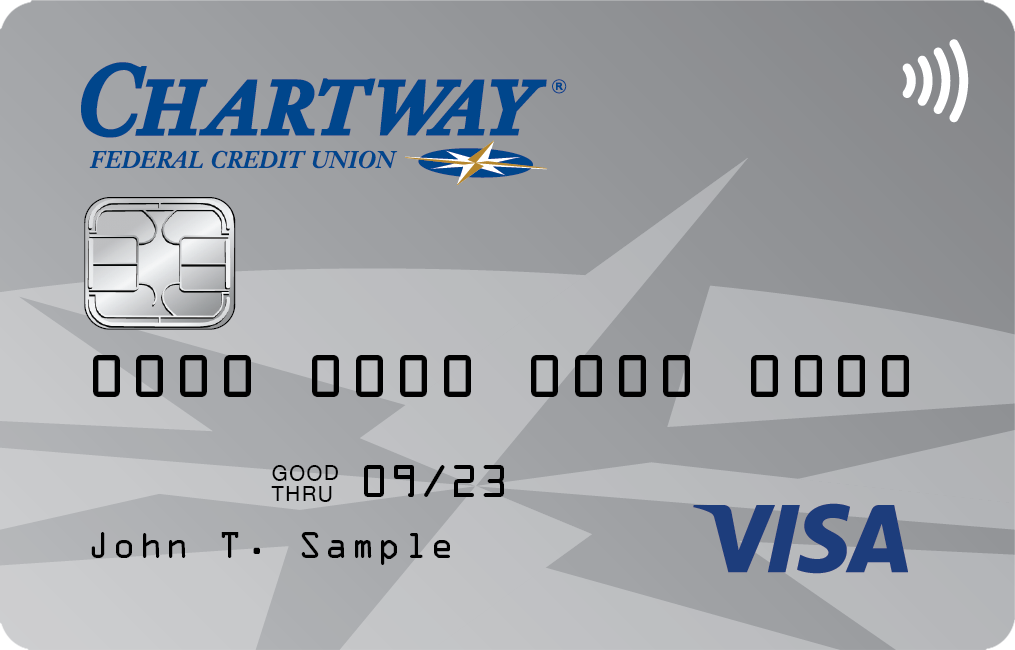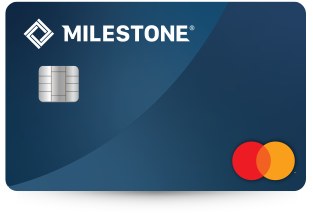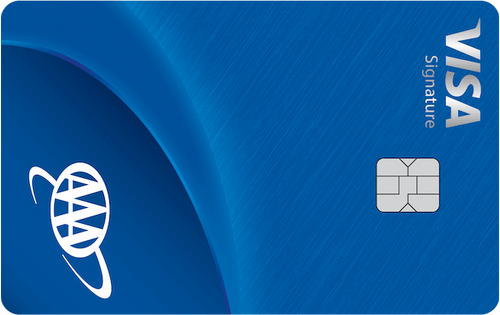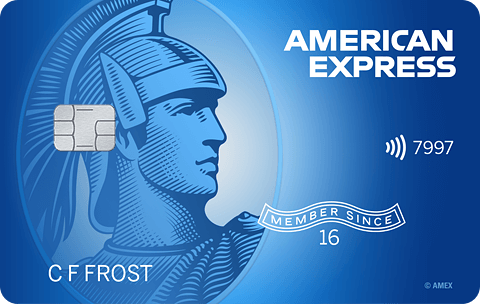- myFICO® Forums
- FICO Scoring and Other Credit Topics
- Understanding FICO® Scoring
- Re: For the Fico Score Experts regarding utilizati...
- Subscribe to RSS Feed
- Mark Topic as New
- Mark Topic as Read
- Float this Topic for Current User
- Bookmark
- Subscribe
- Mute
- Printer Friendly Page
For the Fico Score Experts regarding utilization calculations and high credit vs/limit
Is your credit card giving you the perks you want?
Browse credit cards from a variety of issuers to see if there's a better card for you.
- « Previous
- Next »
- Mark as New
- Bookmark
- Subscribe
- Mute
- Subscribe to RSS Feed
- Permalink
- Report Inappropriate Content
Re: For the Fico Score Experts regarding utilization calculations and high credit vs/limit
Thank you all for the replies.
- Mark as New
- Bookmark
- Subscribe
- Mute
- Subscribe to RSS Feed
- Permalink
- Report Inappropriate Content
Re: For the Fico Score Experts regarding utilization calculations and high credit vs/limit
@FireMedic1 wrote:@SoonerSoldier33When you said: "FICO does have 2 aging metrics which affect scoring specifically for open installment accounts, but not revolving accounts." That really isnt the case.
Age: With FICO there is no such thing as Average Age of Open Revolving Accounts (AAoORA) and Age of Youngest Revolving Account (AoYRA). AAoA's is all accounts. AAoA's drops for any new accounts added to a report. AoYA is reset back to 0 months each time any/all new accounts are opened.
Util: Credit utilization rates are based solely on revolving credit. The rates do not include installment loans like mortgage or auto loans. Installment loans like mortgages and auto loans factor into a different util rate which is your debt-to-income ratio. The only things that aren't included in AAoA's is collections and PR's. Here are the acronyms used here: MyFICO Acronyms Back to topic.
AoYRA is the new account scorecard determiner for FICO8 models. AoYA will either place you in the new account/no new account scorecard for Mortgage scores, but for FICO8 it is AoYRA that will place you into the new account or no new account scorecard. SO not technically a scoring factor, but AoYRA can indirectly affect scores.
Installment loans also have their own separate utilization that is tracked, current balance compared to original balance. This is far different than debt-to-income ratio.
As far as OP's original question, I feel that has been addressed quite well by the responses so far.
- Mark as New
- Bookmark
- Subscribe
- Mute
- Subscribe to RSS Feed
- Permalink
- Report Inappropriate Content
Re: For the Fico Score Experts regarding utilization calculations and high credit vs/limit
@Focker69 wrote:This is great information. Thank you all who responded.
Can someone possibly help me understand why i have heard in the past that upon opening a new credit card, it is important to take the balance up to the limit for at least one cycle and then bring it back down and that this had some kind of impact with the credit score. Specifically the mortgage score. I've understood it that the Mortgage Fico does not count a limit unless the borrower has demonstrated the ability to bring it to the limit and then reduce it. Am i completely off here with this?
It is just a credit myth that gets started and never dies. Someone did this at one point in time and saw a point increase (for a completely unrelated reason) and assumed this was the cause for the increase. Then started giving this advice and it just became perpetuated because the general public doesn't research these claims, especially when there is a logical argument from a "reliable" source.
You can open a card and never use it, for the entire time that card is open the limit will count toward your overall limit and be factored into utilization. Non-use of the card can lead to closure. And there are several lenders that will give better CLI approvals if you use the majority of your limit, which is probably part of the reason this myth started to spread, but you don't have to let that utilization report to the bureaus.
- Mark as New
- Bookmark
- Subscribe
- Mute
- Subscribe to RSS Feed
- Permalink
- Report Inappropriate Content
Re: For the Fico Score Experts regarding utilization calculations and high credit vs/limit
@Focker69 wrote:
This is specifically what I was looking for. Just how the Mortgage versions of the score treats them. I'll go and post in the mortgage section. Are you certain that this is true?
Thank you all for the replies.
Are we certain what is true? That it is ridiculous to think one has to run up the balance on a fresh new credit card just to claim the credit limit for scoring purposes? Yes, that is a patently ridiculous idea. Whoever told it to you doesn't know what they are talking about. With half the banks out there, such an action is likely to get the card completely shut down.
You're getting good advice here. If you aren't certain who to believe, there are many articles written by the experts at Fair Issac, as another formal part of this MyFICO overall site, which go over the basics of how credit cards and FICO scoring works. Maybe best to begin with that to get a baseline of understanding.
Oct 2014 $46k on $127k 36% util EQ 722 TU 727 EX 727
April 2018 $18k on $344k 5% util EQ 806 TU 810 EX 812
Jan 2019 $7.6k on $360k EQ 832 TU 839 EX 831
March 2021 $33k on $312k EQ 796 TU 798 EX 801
May 2021 Paid all Installments and Mortgages, one new Mortgage EQ 761 TY 774 EX 777
April 2022 EQ=811 TU=807 EX=805 - TU VS 3.0 765

- Mark as New
- Bookmark
- Subscribe
- Mute
- Subscribe to RSS Feed
- Permalink
- Report Inappropriate Content
Re: For the Fico Score Experts regarding utilization calculations and high credit vs/limit
@Anonymous wrote:
@FireMedic1 wrote:@SoonerSoldier33When you said: "FICO does have 2 aging metrics which affect scoring specifically for open installment accounts, but not revolving accounts." That really isnt the case.
Age: With FICO there is no such thing as Average Age of Open Revolving Accounts (AAoORA) and Age of Youngest Revolving Account (AoYRA). AAoA's is all accounts. AAoA's drops for any new accounts added to a report. AoYA is reset back to 0 months each time any/all new accounts are opened.
Util: Credit utilization rates are based solely on revolving credit. The rates do not include installment loans like mortgage or auto loans. Installment loans like mortgages and auto loans factor into a different util rate which is your debt-to-income ratio. The only things that aren't included in AAoA's is collections and PR's. Here are the acronyms used here: MyFICO Acronyms Back to topic.
AoYRA is the new account scorecard determiner for FICO8 models. AoYA will either place you in the new account/no new account scorecard for Mortgage scores, but for FICO8 it is AoYRA that will place you into the new account or no new account scorecard. SO not technically a scoring factor, but AoYRA can indirectly affect scores.
Installment loans also have their own separate utilization that is tracked, current balance compared to original balance. This is far different than debt-to-income ratio. Thanks for pointing that out. I meant to type "which is figured into your"DTI
As far as OP's original question, I feel that has been addressed quite well by the responses so far.
This will be my last responce. It is getting away from the OP. With FICO's language there seems to imply that a given model has an "either/or" classification where it categorizes every account as either "new" or "not new." FICO Scores look at how many new accounts you have by type of account yes. They also may look at how many of your accounts are new accounts. I understand what your saying. Your scorecard is reassigned when you hit one year with AoYA. AOYRA (for lack of a better acronym) 1 year is a breakpoint for FICO 8. Where it gets interesting is for some scorecards there may be smaller increments like the new file scorecards. You go from a new account scorecard to a no new account scorecard. If a person's AoYA (age of youngest account) is already less than 1 year old before lets say a 3 card app spree, you have already taken the AoYA penalty before therefore none of the 3 cards would triggered a penalty.
If your AoYA on the other hand was 1 year+, and you app again, that's when you take the penalty hit. You will recoup those points when your youngest account reaches the one year mark, presuming you don't app again until then. However you'll take some hits to your AAoA and inquiries on what your current profile looks like. Back to the Mortgage part. This is why we ask people looking for home loans not to app for a year before applying.
- Mark as New
- Bookmark
- Subscribe
- Mute
- Subscribe to RSS Feed
- Permalink
- Report Inappropriate Content
Re: For the Fico Score Experts regarding utilization calculations and high credit vs/limit
@FireMedic1 wrote:
@Anonymous wrote:
@FireMedic1 wrote:@SoonerSoldier33When you said: "FICO does have 2 aging metrics which affect scoring specifically for open installment accounts, but not revolving accounts." That really isnt the case.
Age: With FICO there is no such thing as Average Age of Open Revolving Accounts (AAoORA) and Age of Youngest Revolving Account (AoYRA). AAoA's is all accounts. AAoA's drops for any new accounts added to a report. AoYA is reset back to 0 months each time any/all new accounts are opened.
Util: Credit utilization rates are based solely on revolving credit. The rates do not include installment loans like mortgage or auto loans. Installment loans like mortgages and auto loans factor into a different util rate which is your debt-to-income ratio. The only things that aren't included in AAoA's is collections and PR's. Here are the acronyms used here: MyFICO Acronyms Back to topic.
AoYRA is the new account scorecard determiner for FICO8 models. AoYA will either place you in the new account/no new account scorecard for Mortgage scores, but for FICO8 it is AoYRA that will place you into the new account or no new account scorecard. SO not technically a scoring factor, but AoYRA can indirectly affect scores.
Installment loans also have their own separate utilization that is tracked, current balance compared to original balance. This is far different than debt-to-income ratio. Thanks for pointing that out. I meant to type "which is figured into your"DTI
As far as OP's original question, I feel that has been addressed quite well by the responses so far.
This will be my last responce. It is getting away from the OP. With FICO's language there seems to imply that a given model has an "either/or" classification where it categorizes every account as either "new" or "not new." FICO Scores look at how many new accounts you have by type of account yes. They also may look at how many of your accounts are new accounts. I understand what your saying. Your scorecard is reassigned when you hit one year with AoYA. AOYRA (for lack of a better acronym) 1 year is a breakpoint for FICO 8. Where it gets interesting is for some scorecards there may be smaller increments like the new file scorecards. You go from a new account scorecard to a no new account scorecard. If a person's AoYA (age of youngest account) is already less than 1 year old before lets say a 3 card app spree, you have already taken the AoYA penalty before therefore none of the 3 cards would triggered a penalty.
If your AoYA on the other hand was 1 year+, and you app again, that's when you take the penalty hit. You will recoup those points when your youngest account reaches the one year mark, presuming you don't app again until then. However you'll take some hits to your AAoA and inquiries on what your current profile looks like. Back to the Mortgage part. This is why we ask people looking for home loans not to app for a year before applying.
The scorecard change for mortgage scores occurs at 18 months AoYA, not 12 months. This has been documented extensively on several posts throughout the forum. That information is also in the primer. Underwriting does not like new accounts and the scoring effects of inquiries only last a year, those are the reasons why it is strongly encouraged not to apply for anything 12 months before the mortgage, ideally it should be encouraged to not apply for anything for 18 months prior.
- Mark as New
- Bookmark
- Subscribe
- Mute
- Subscribe to RSS Feed
- Permalink
- Report Inappropriate Content
Re: For the Fico Score Experts regarding utilization calculations and high credit vs/limit
- Mark as New
- Bookmark
- Subscribe
- Mute
- Subscribe to RSS Feed
- Permalink
- Report Inappropriate Content
Re: For the Fico Score Experts regarding utilization calculations and high credit vs/limit
@Focker69 wrote:
This is really great information. Thank you all for the insights. Just one additional question, assuming someone goes from an aoya of 19 months and then resets to Zero due to a new account opening, can anyone estimate what the score impact would be to the Mortgage Fico?
Unfortunately, there isn't really a good way to estimate. It is pretty profile dependent, some people see fairly large drops. Others have a high enough AAoA to minimize age related point losses and don't lose many points. Typically, you are going to lose around 5-10 points for the new hard pull. Then you could lose several more points for the decrease in AAoA as well as being reset to a new account scorecard. If you are close to a score threshold for better rates, then it is definitely advised that you hold off on any new applications/accounts until you close on the mortgage. That being said if you are comfortably above the score you need to be at for your mortgage product of choice then opening a new account is not going to be the end of the world for you.
We are currently in the middle of getting a new mortgage and it was completely unplanned. We just opened a new car loan in May, I opened new credit cards in both March and April, and my wife opened a new card in April as well. We had no issues with underwriting and we qualified for the top tier rate with our lender.
- Mark as New
- Bookmark
- Subscribe
- Mute
- Subscribe to RSS Feed
- Permalink
- Report Inappropriate Content
Re: For the Fico Score Experts regarding utilization calculations and high credit vs/limit
And many thanks to everyone else here who provided input. Greatly appreciated.
- Mark as New
- Bookmark
- Subscribe
- Mute
- Subscribe to RSS Feed
- Permalink
- Report Inappropriate Content
Re: For the Fico Score Experts regarding utilization calculations and high credit vs/limit
@Focker69 wrote:
This is really great information. Thank you all for the insights. Just one additional question, assuming someone goes from an aoya of 19 months and then resets to Zero due to a new account opening, can anyone estimate what the score impact would be to the Mortgage Fico?
I believe your mortgage scores will get hit, but I can't say by how much.































Total revolving limits 569520 (505320 reporting) FICO 8: EQ 689 TU 691 EX 682